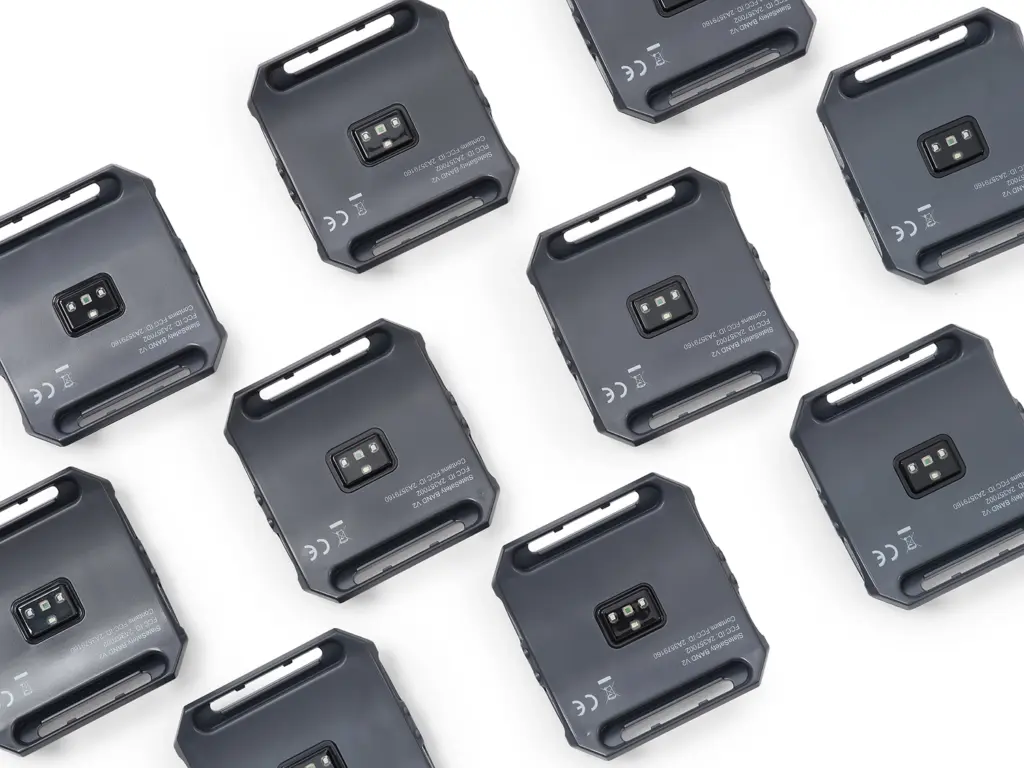What if a tiny device could give you a heads-up, a nudge to say, “Hold on, you’re pushing too hard,” even before your body feels the strain? What if your heartbeat could be a lighthouse, guiding you away from the rocks of overexertion and heat stress? Welcome to PPG sensors, a technology transforming the future of safety wearables and heat stress management.
PPG sensors have emerged as an unexpected hero in workplace safety. These tiny guardians are tirelessly working to measure and analyze the hidden language of our heartbeats. They are bringing biometric data out of the clinical realm and onto construction sites, factories, and other high-risk environments, turning everyday wearables into lifesaving equipment.
If you’re intrigued by the fusion of technology and health or curious about the silent revolution sweeping across workplaces, this article is for you. Join us as we explore the hows and whys of PPG sensors, their advantages over traditional monitoring methods, and the exciting, life-saving potential they hold for the future of workplace safety.
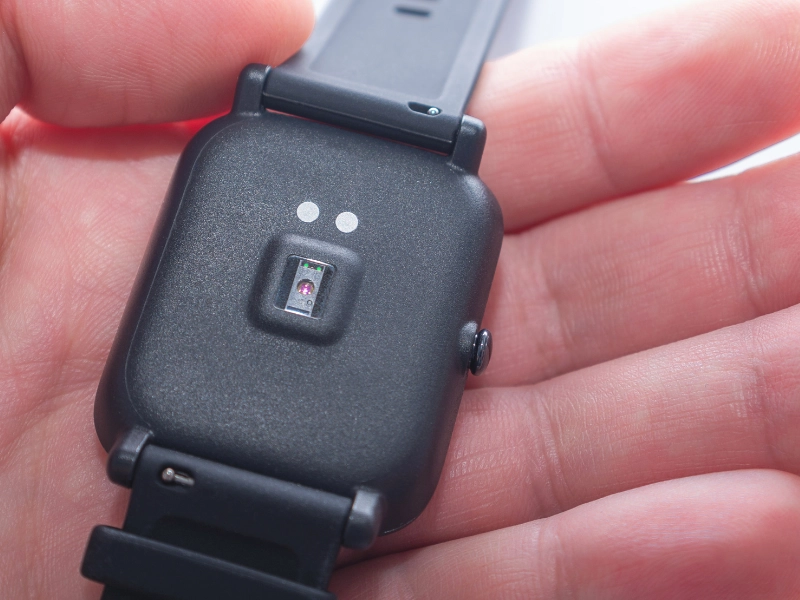
Understanding PPG Sensors
Photoplethysmography, or PPG, is a simple yet highly effective technology that enables non-invasive measurement of variations in blood volume under the skin. It plays an instrumental role in heart rate measurement, making it a key component in various health and fitness monitoring devices.
How PPG Sensors Work
PPG sensors emit a light, often in the green spectrum, onto the skin. Hemoglobin, the protein in our blood that carries oxygen, absorbs this light. As the heart beats and blood volume changes under the skin, the amount of light absorbed fluctuates. This change in light absorption and reflection is then detected by a light-sensitive photodiode in the PPG sensor.
The difference in reflected light corresponds directly to the fluctuations in blood volume that occur with each heartbeat. Therefore, by observing these changes in reflected light, PPG sensors can accurately determine heart rate in real-time.
The Advantage of Continuous Automatic Zero Calibration
One of the major advantages of PPG sensors is that they don’t require the often tedious calibration process. Most sensors require periodic calibration to ensure accuracy, but PPG sensors are unique in that they perform continuous automatic zero calibration.
To clarify, this means PPG sensors constantly adjust their baseline to zero, looking for the relative changes in blood volume rather than an absolute measure. This makes them remarkably efficient at adapting to different skin tones, varying levels of ambient light, and movements that can potentially interfere with the readings. By continuously resetting their baseline, PPG sensors ensure dependable, real-time monitoring, even in challenging conditions.
PPG Sensor In Action
PPG sensors are now integral parts of a wide range of devices, given their ability to reliably monitor heart rate. For instance, popular fitness trackers and smartwatches, like the Fitbit series or the Apple Watch, use PPG sensors to provide users with real-time heart rate data. This helps individuals monitor their health and adjust their physical activities accordingly.

In clinical settings, PPG sensors are part of patient monitoring systems, allowing medical professionals to monitor patient heart rate non-invasively and in real-time. This can be especially beneficial for patients who may be at risk of cardiovascular events.
In the industrial sector, PPG sensors are being integrated into safety wearables. By monitoring workers’ heart rates, these devices provide an early warning sign of possible heat stress or overexertion, leading to timely intervention and preventing serious health risks.
PPG sensors represent a significant advancement in biometric monitoring technology. As technology advances, we can expect to see further innovation and even broader uses of PPG sensors in the future.
PPG Sensors vs. ECG
Heart rate measurement has historically relied on electrocardiograms (ECG or EKG). ECG is a time-tested, medical-grade technology used to measure the electrical activity of the heart over a period of time. It provides detailed information and can diagnose a variety of heart conditions.
However, the use of ECG comes with its own limitations, which have been significantly addressed by the advent of photoplethysmography (PPG) sensors. Let’s dive into a more detailed comparison between these two technologies, their use cases, and their advantages.
ECG: The Traditional Standard
An ECG works by placing electrodes on the skin around the heart, typically across the chest. The electrodes pick up the electrical signals the heart produces as it beats, and the data is graphically represented as an ECG reading. This reading can reveal details about heart rhythm, show signs of heart disease, or even indicate a previous or ongoing heart attack. However, the application of ECG comes with some practical difficulties.
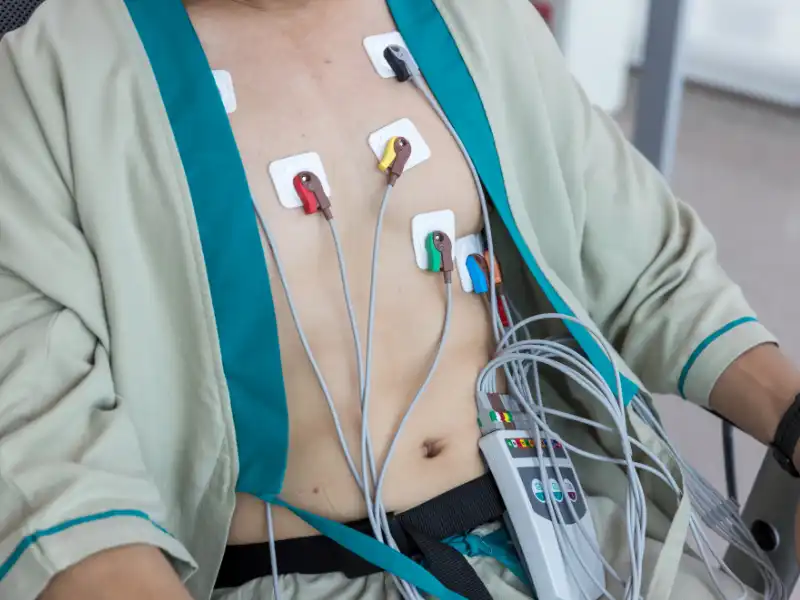
First, ECG setups can be quite inconvenient. They typically involve multiple wired electrodes placed across the chest, which can restrict mobility and may not be feasible for continuous, real-time monitoring, especially during physical activity. Moreover, ECG can be sensitive to electrical noise and movement, leading to errors in the readings, making it less reliable in high-activity contexts or when used as wearable technology.
PPG Sensors: The Convenient Alternative
On the other hand, PPG sensors offer a convenient and user-friendly solution to heart rate monitoring. As previously discussed, PPG sensors work by measuring changes in blood volume through light absorption, a process that is non-invasive and requires only a single point of contact with the skin.
PPG sensors primarily measure heart rate, which is a key indicator of various health conditions and bodily stress levels. Moreover, the sensors are evolving to detect irregular heartbeats, heart rate variability (HRV), and oxygen saturation (SpO2). These biometrics provide deeper insights into the user’s health and can be critical in preventing incidents related to overexertion or heat stress.
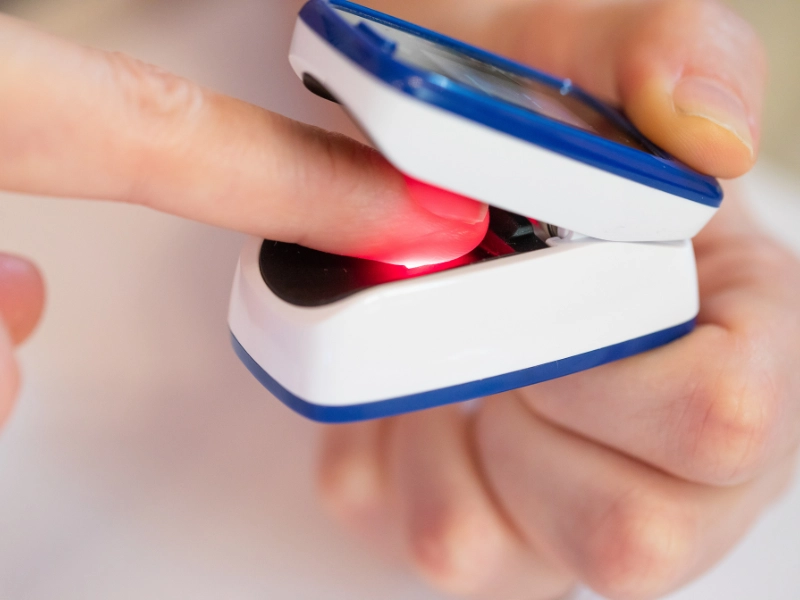
PPG sensors are typically small, compact, and free of wired connections, which makes them highly suitable for integration into wearable devices like smartwatches and fitness bands. Users can move freely while wearing these devices, making PPG sensors a more convenient option for continuous, real-time heart rate monitoring.
However, it’s important to note that while PPG sensors are excellent for tracking heart rate and detecting major rhythm abnormalities, they don’t provide the detailed electrical information about the heart that an ECG does. Thus, ECG remains the preferred method for diagnosing specific heart conditions in a clinical setting.
Revolutionizing Safety Wearables: The Role of PPG Sensors
The advent of photoplethysmography (PPG) sensors has brought about a significant shift in the world of safety wearables. For example, PPG sensors can identify variations in heart rate and HRV. These fluctuations can signal the body’s reaction to strain, exertion, or elevated temperatures.
Elevated heart rates and altered HRV patterns can be early warning signs of heat stress. This information enables individuals and their supervisors to intervene and prevent further escalation, enhancing overall safety and well-being.
SlateSafety’s BAND V2
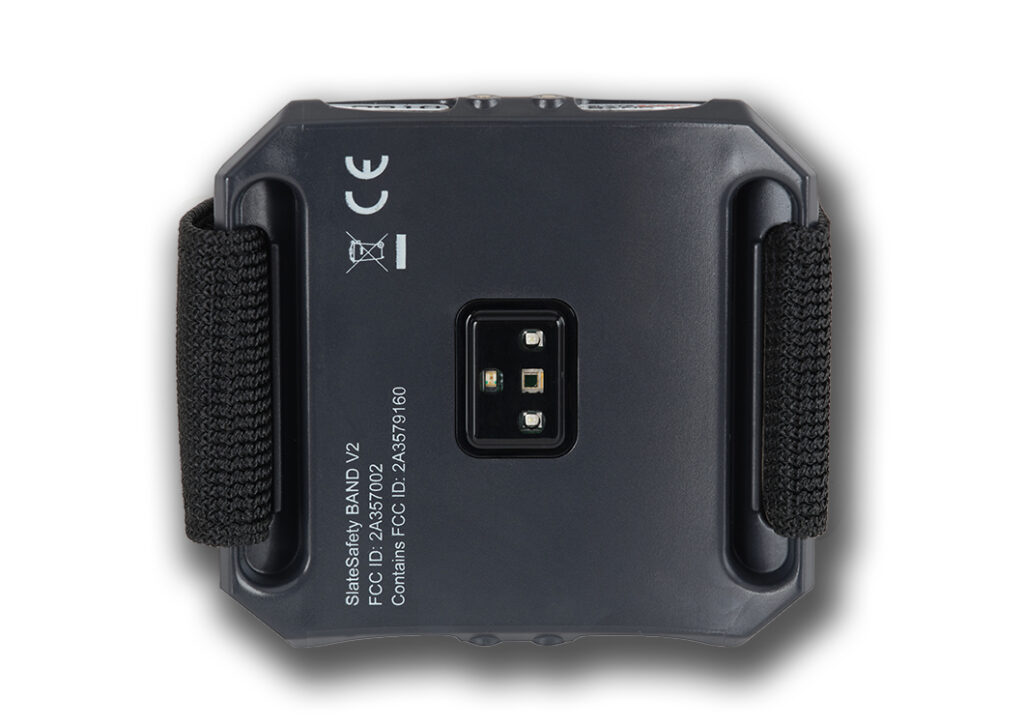
An excellent example of applying PPG sensors in safety wearables is the BAND V2, developed by SlateSafety. This wearable device, worn as an armband, is designed to assist workers in environments where heat and exertion levels can pose significant risks.
The BAND V2, utilizing PPG sensors, continuously monitors workers’ heart rates, core body temperatures, and exertion levels. The real-time data the device captures provides insights into the early signs of heat strain. Thus, measures can be taken to prevent heat-related illnesses such as heat exhaustion or heat stroke, making the workplace significantly safer.
The continuous monitoring of biometric data allows for personalized work/rest cycles. By understanding their body’s real-time responses, workers can manage their workload more effectively, reducing the risk of overexertion. Simultaneously, supervisors can oversee individual and team health data, making informed decisions about rest breaks and workload distribution.
Expanding the Scope of PPG Sensors
As technology advances, it’s anticipated that PPG sensors’ capabilities will broaden further. Future improvements may enable these sensors to detect other vital health indicators, such as dehydration levels or signs of fatigue. Early detection of such conditions could further enhance the preventative capabilities of safety wearables.
In the future, PPG sensors may even track stress levels or sleep patterns, increasingly recognized as crucial to overall health and workplace safety. These enhancements could make safety wearables with PPG sensors an indispensable tool in various industries, from construction and manufacturing to emergency services and military applications.
Integrating PPG sensors into safety wearables marks a significant stride in leveraging technology for workplace safety. By providing real-time, personalized biometric data, these devices empower workers and supervisors alike to proactively manage work conditions, promoting well-being and preventing potential health risks. As PPG technology continues to evolve, we can expect an even greater revolution in the realm of safety wearables.

